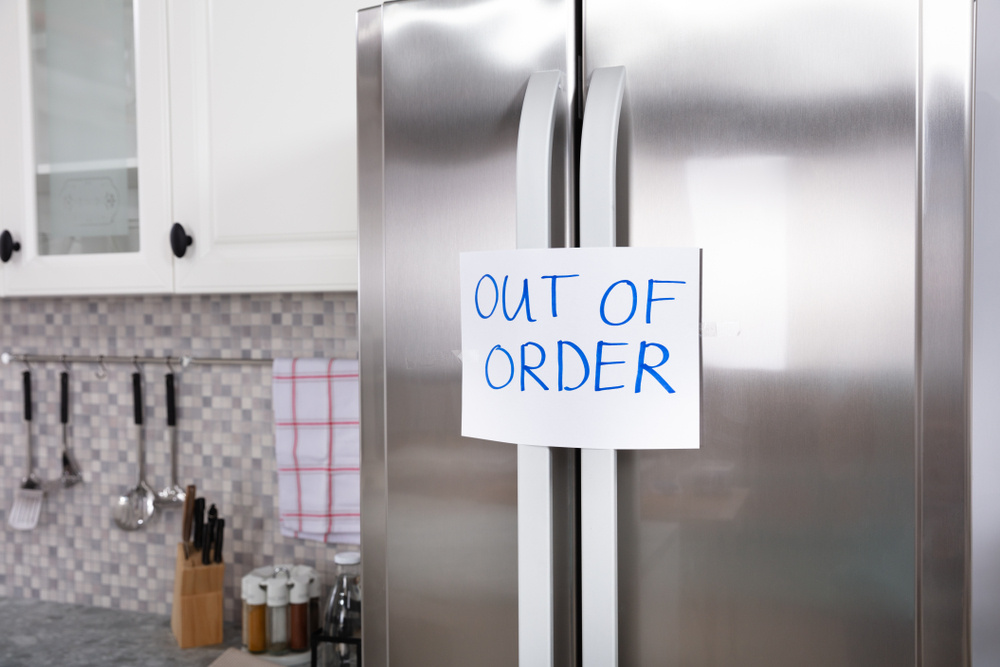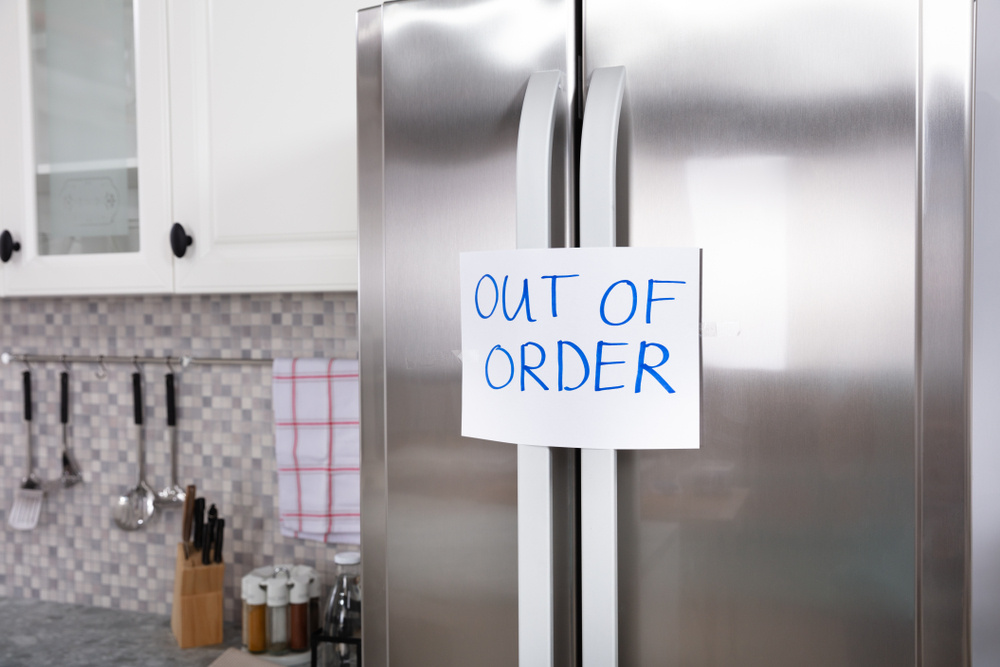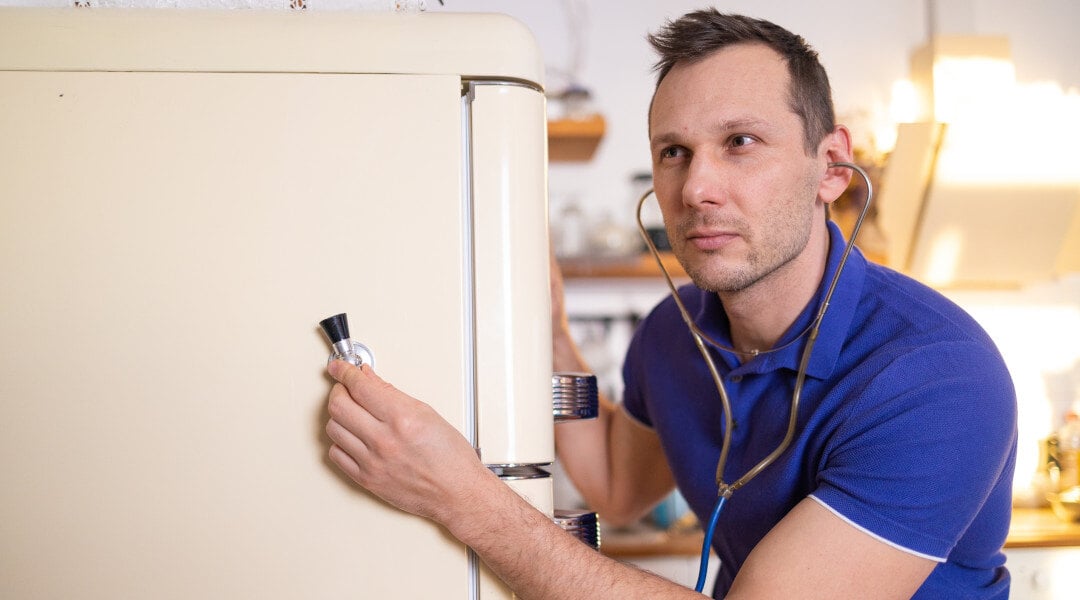Is your refrigerator failing to keep your groceries fresh and chilled? You’re not alone—many people face this frustrating issue at some point. Don't fret, though; there are several steps you can take to troubleshoot and potentially fix the problem before reaching out for professional help. Let's break down the common causes and handy fixes for when your fridge isn't cooling properly.
Sign up for our Blog!
Common Causes of Cooling Problems
Dirty Condenser Coils
Dirty condenser coils are often at the heart of cooling issues. Located either at the back or bottom of the fridge, these coils are essential for removing heat from inside the unit. If they get covered in dust or grime, they can't work effectively.
To tackle this issue:
- Unplug the Fridge – Safety first!
- Locate the Coils – Usually found at the back or bottom of your fridge.
- Clean the Coils – Use a vacuum or a brush to clear away any dust or debris.
Cleaning your coils every six months can improve your fridge’s efficiency significantly.
Faulty Door Seals
The rubber seals around your fridge doors, known as gaskets, play a crucial role in keeping cold air in and warm air out. If these seals are dirty or damaged, your fridge has to work harder to maintain cool temperatures.
Here’s how you can assess your door seals:
- Inspect for Damage – Look for cracks or tears.
- Perform the Dollar Bill Test – Close the door on a dollar bill. If it pulls out easily, the seal is weak.
- Clean the Seals – Wipe them with warm, soapy water to remove any dirt.
Replacing worn-out seals can be a game-changer in keeping your refrigerator cool.
Checking Power and Temperature Settings
Before diving deeper into complicated fixes, start by checking your fridge's power supply and temperature settings. Here are some simple checks that can often resolve cooling issues.
Power Issues
Make sure your fridge is plugged in correctly. Check that the plug is fully inserted into the outlet. If the fridge still isn’t getting power, check your home’s circuit breaker as it might have tripped.
Thermostat Settings
Your refrigerator has a thermostat that dictates how cold it should be. If it's set too high, your food may not stay cold enough. The ideal temperature for a fridge is between 32°F and 40°F.
To adjust your thermostat:
- Find the Temperature Control – It could be a dial or buttons, usually located inside the fridge.
- Set It Correctly – Mid-range settings generally work well.
- Verify with a Thermometer – Place a thermometer inside your fridge to make sure the temperature is within the ideal range.
Keep in mind that changes might take a few hours to reflect.
Dealing with Airflow Problems
Proper airflow is vital for keeping all parts of your fridge cool. If air isn't circulating well, some areas might warm up while others stay cold.
Clearing Vents
Vents inside your fridge and freezer help with air circulation. If blocked by food or ice, they can't function correctly.
To address this:
- Empty the Fridge – Remove all food items for easier access.
- Locate the Vents – Usually found on the back wall.
- Clear Obstructions – Ensure nothing is blocking them and avoid overfilling your fridge in the future.
Defrosting Issues
Ice build-up in the freezer can impede the fridge’s cooling process. Most modern refrigerators come with an auto-defrost function, but it can occasionally fail.
If your freezer has a thick layer of ice, here’s what to do:
- Empty the Freezer – Remove all items.
- Unplug the Fridge – Allow it to defrost completely, which may take several hours.
- Clean and Dry – Once defrosted, clean up any water before plugging it back in.
When to Call a Professional
Sometimes, even after doing all you can, a refrigerator may still refuse to cool properly. This is when professional repairs may be necessary.
Signs that it’s time to contact an expert include:
- Strange noises from the fridge.
- The compressor (the part that hums) not running.
- Water pooling under your fridge.
- All troubleshooting checks have been performed without success.
Remember, complex issues like a malfunctioning compressor or refrigerant leaks require specialized skills and tools to fix safely.

Keeping Your Fridge Running Smoothly
Regular maintenance can prevent many cooling problems. Here are some tips to keep your fridge in top shape:
- Clean Condenser Coils Regularly – Aim for every six months.
- Check and Clean Door Seals – Ensure they're functioning properly.
- Avoid Overstuffing – Give your fridge and freezer space.
- Keep Optimal Temperature – Maintain between 32°F and 40°F.
- Manual Defrost When Needed – If the auto-defrost fails, do it manually.
With these practices, your fridge can remain efficient, saving you energy and money in the long run.
Advanced Troubleshooting for Refrigerator Cooling Issues
If you’re comfortable with more complex troubleshooting, here's how to dig a bit deeper.
Checking the Compressor
The compressor circulates refrigerant through the system, and if your fridge isn’t cooling, this might be the problem.
To check:
- Unplug the Fridge and Move it – Give yourself space to listen.
- Reconnect and Listen – Plug it back in. A hum indicates the compressor is working.
If you hear a clicking instead of a hum, the compressor might be faulty, and you should call a professional.
Looking at the Evaporator Fan
Evaporator fans distribute cold air throughout your fridge. If they aren’t working, the freezer remains cold, but the fridge won't.
To inspect:
- Open the Freezer – Identify the small fan at the back.
- Check for Operation – The fan should activate when the door opens.
A non-operational or noisy fan may need replacement—call in an expert for help.
Handling a Faulty Defrost System
A fridge’s defrost system prevents ice from accumulating on the evaporator coils. When it fails, ice build-up blocks cold air flow.
Indicators of a defrost system problem:
- Excessive ice in the freezer.
- Frost forming on the freezer's back wall.
- Water leaks onto the floor.
Repairs can involve replacing the defrost thermostat, timer, or heater—a task best left to professionals.
Checking for Refrigerant Leaks
Refrigerant is vital for cooling. A leak means inadequate cooling.
Signs include:
- No cooling at all.
- Hearing a hissing sound.
- Smelling chemicals near the fridge.
Professional help is required for leaks since handling refrigerant can be dangerous without the right tools.
Benefits of Working with FixHomz
At FixHomz, we understand the importance of a well-functioning refrigerator in your home. Founded by industry veterans, our team brings unparalleled experience in delivering excellent service to manufacturers, warranty companies, and retailers, with deep knowledge of home appliances and a commitment to keeping them running smoothly. Our dedication to creating exceptional customer experiences is unwavering, particularly in the home warranty industry, where we consistently strive for high customer satisfaction. We offer comprehensive coverage with unique warranty benefits, higher claims limits, and fixed deductibles, tailored for both new and existing homes, while providing diverse service options including filter checks, electronics installation, and appliance repair, regardless of home ownership or warranty status. Contact us today to learn more about how we can protect your home appliances and provide peace of mind for years to come





.jpg)
.jpg)



.jpg)

